- [HONDA CBR400R] Details and test ride reviews
- An aggressive design that seems to be the CBR series
- Foot grounding
- All LED lights
- Newly designed full digital meter
- Handlebars in sportier position
- Undercarriage that can be set to suit your style
- The engine is even easier to handle
- Fuel tank with increased capacity
- Seats for better foot grounding
- What's the Selling Price Concern?
- When I actually ride it!
[HONDA CBR400R] Details and test ride reviews
The CBR400R first appeared in 2013 as a HONDA 400cc full cowl sports motorcycle. Continuing from 2016, the CBR400R is not only designed to be more aggressive with minor changes in 2019 but also added equipment such as lights and meter.
The CBR400R may bear the name of "CBR", but it's a motorcycle that has a twin-engine and position that is easy to handle for everyday use and touring, and it has a different character from "CBR" as a supersport. In this article, I will bring the reviews about the running along with the details of the newly reborn CBR400R!
An aggressive design that seems to be the CBR series
Overall Dimension [L x W x H]
2,080mm x 755mm x 1,145mm
[Curb weight]
192kg
From the dual headlight design that can be said to be the identity of the CBR series, you can see that it is finished in an aggressive design that does not inferior to the super sports model in each part.
Particularly noticeable is the part that leads to the rectification effect. The shape of the windscreen has been changed to match the change in the handlebar position. In addition, the aero parts attached to the bottom of the cowl, the duct of the seat cowl, etc. are reminiscent of the sporty running that splits the air.
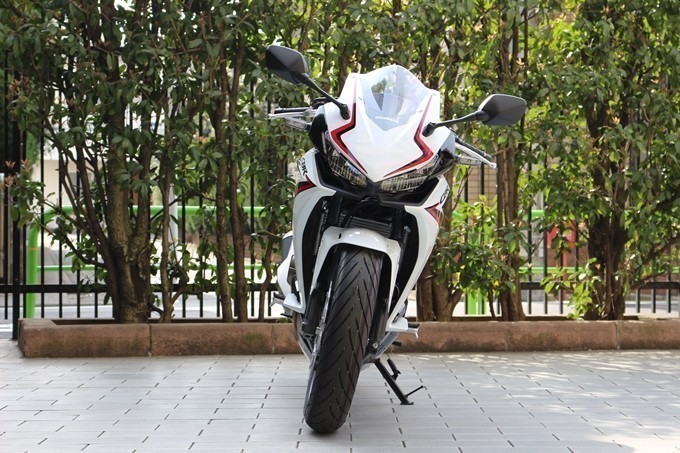 |
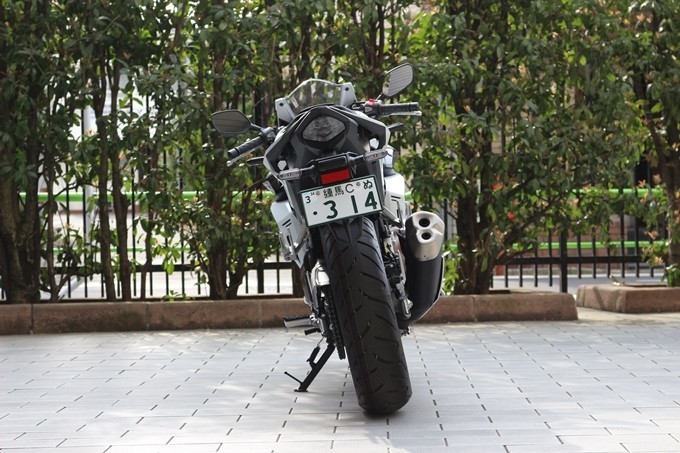 |
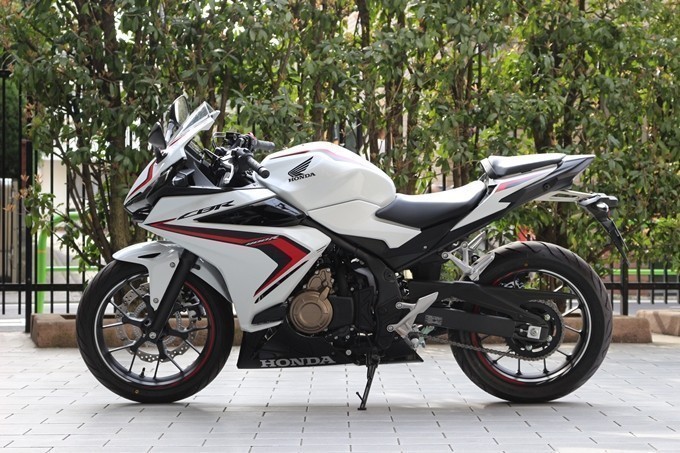 |
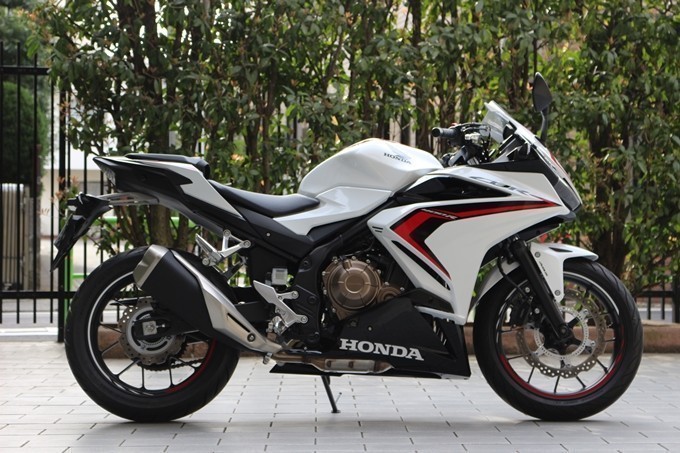 |
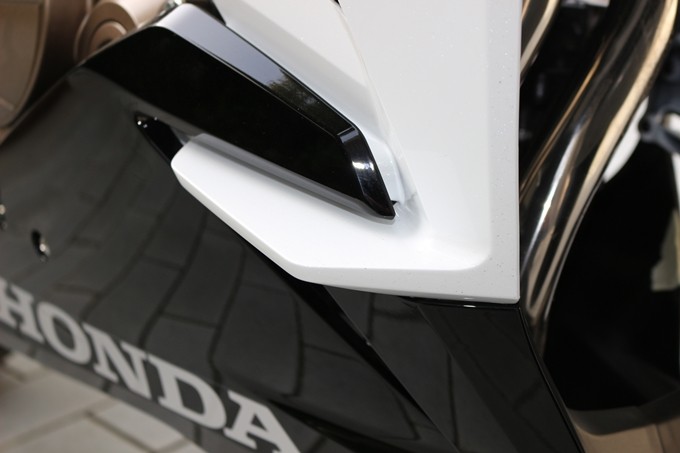 |
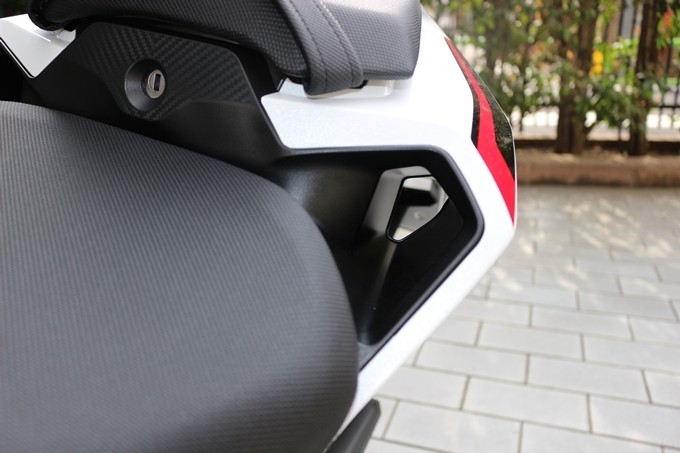 |
Foot grounding
[Seat height]
785mm
Foot grounding
The seat height is 785mm, which is equivalent to the 250cc class, and the foot grounding is very good by combining a sharp seat shape.
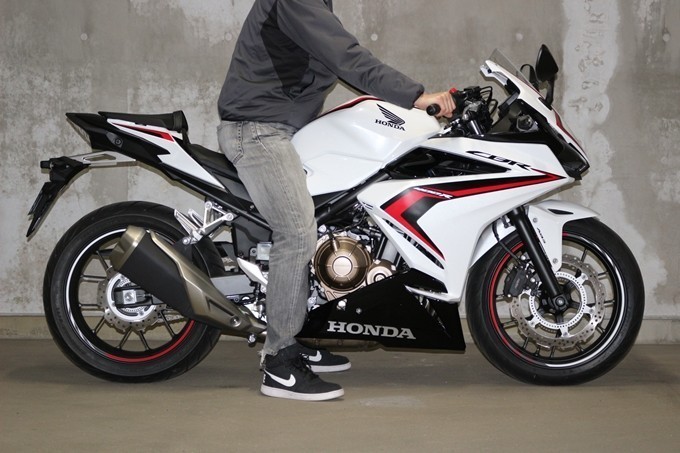 |
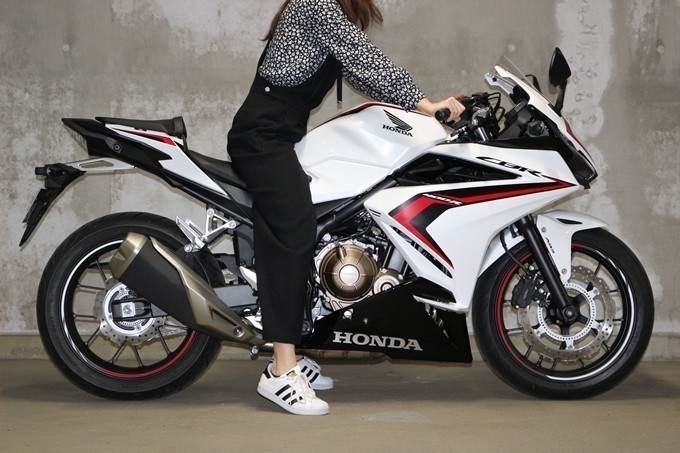 |
All LED lights
In addition to the LED headlights that have a similar design to the other CBR series, the LEDs have also been adopted on the front and rear turn signals.
This LED turn signal is also active as an "emergency stop signal" that quickly transmits to the motorcycle behind by flashing the hazard light at high speed at the time of sudden braking.
[Headlights]
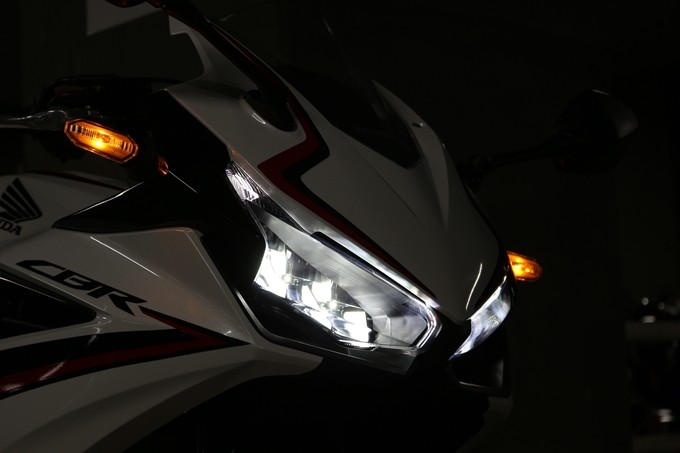 |
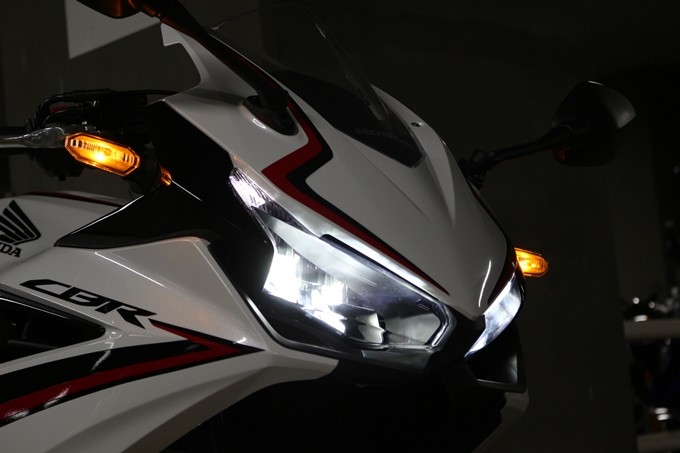 |
[Tail lights]
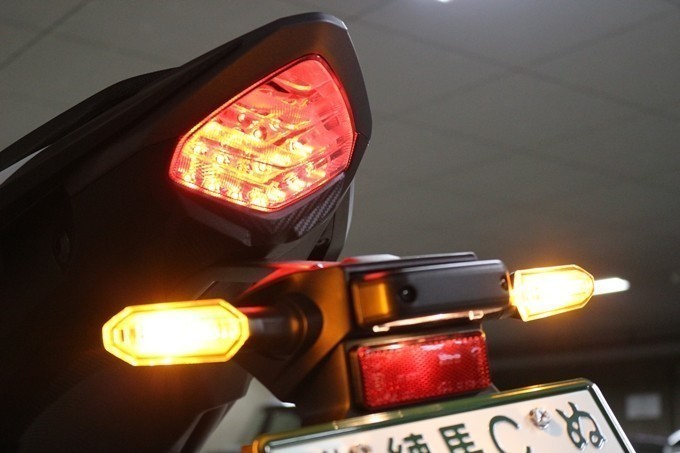 |
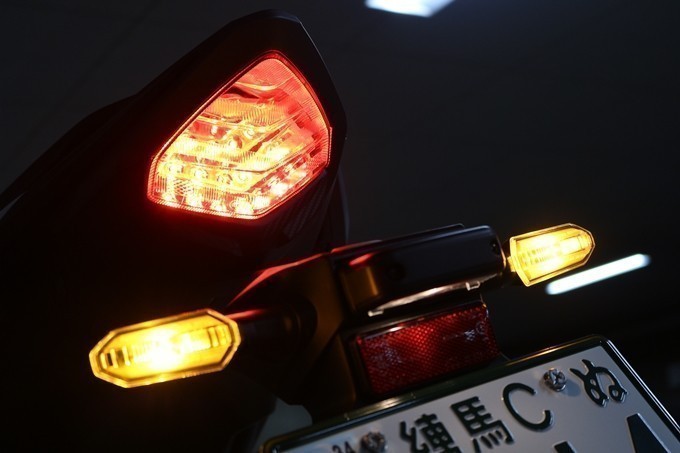 |
Newly designed full digital meter
The newly adopted full digital meter has the same layout as the new model CBR/CB650R. In addition to the basic information such as speed, tachometer, fuel gauge, and clock, the new gauges include a water temperature gauge and shift indicator. Other features include a tachometer indicator that tells you when to upshift and a tachometer peak hold function that signals any number of revolutions by blinking.
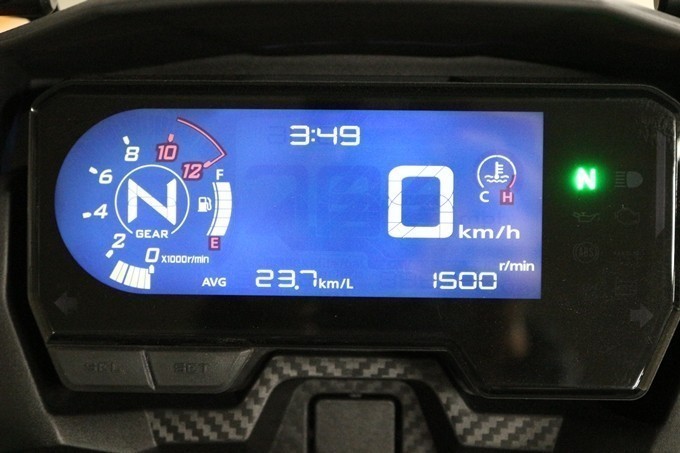 |
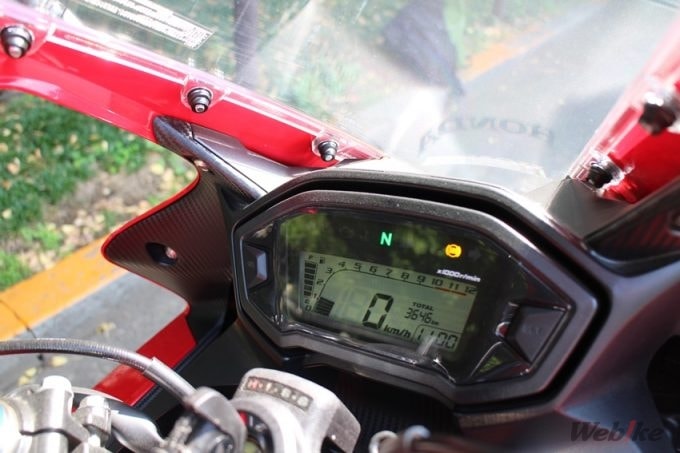 |
Handlebars in sportier position
The handle mount position on the previous model was above the top bridge, but the new model is moved below the top bridge. This not only gives a sportier look around the cockpit, but it also allows for a deeper forward-leaning position, making the new model more adaptable to sport riding than before.
 |
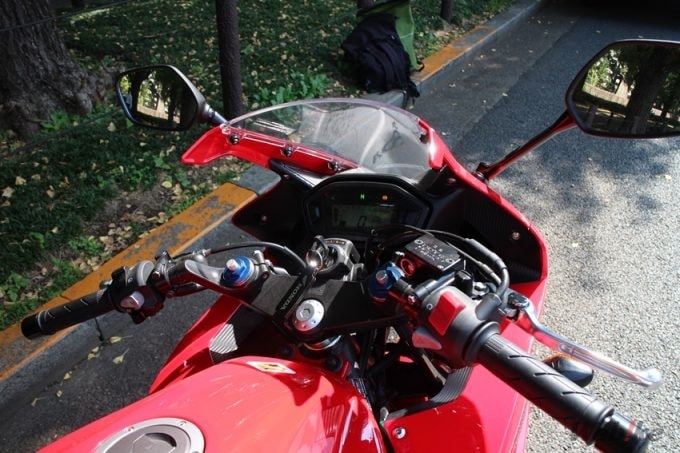 |
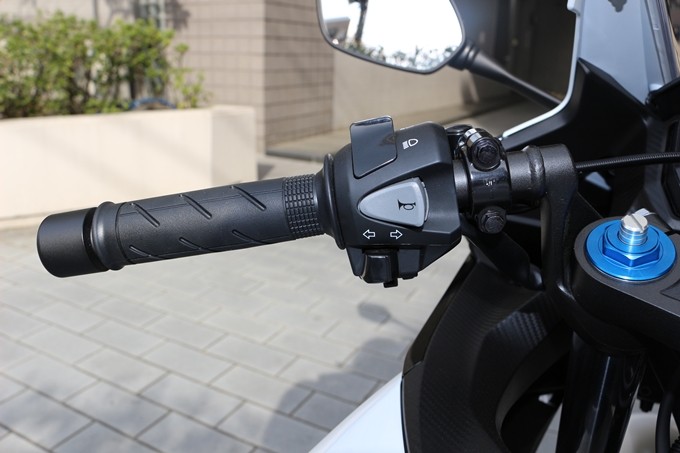 |
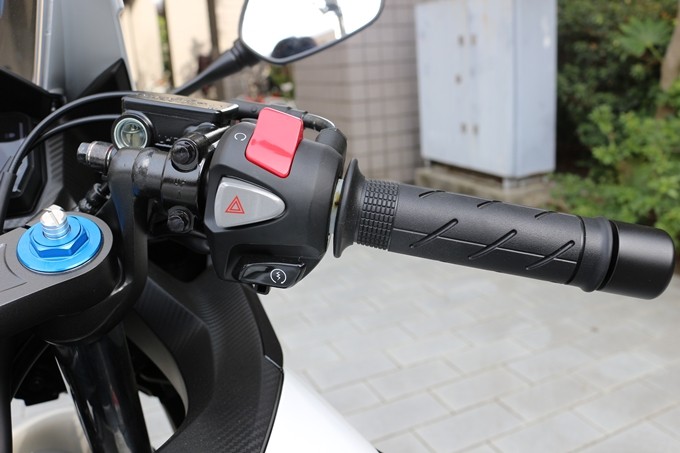 |
Undercarriage that can be set to suit your style
[Wheels]
The wheels are equipped with aluminum cast wheels that adopted the Y-shaped spoke design as the previous model. The lightness of the feet has been produced.
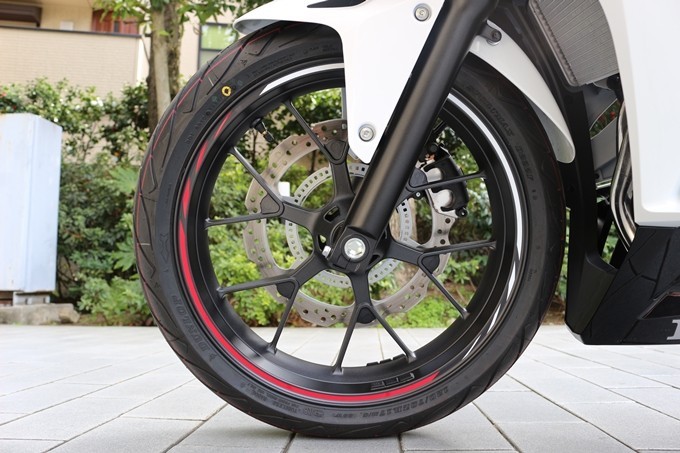 |
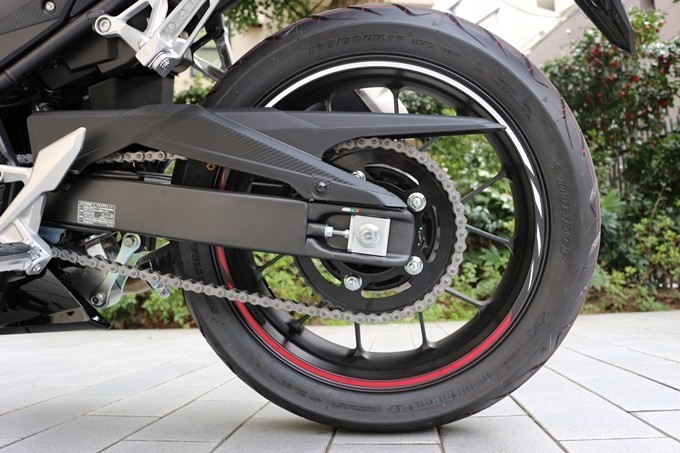 |
[Brake]
The front is a 320mm diameter single disc brake and the rear is a 240mm disc brake, and both front and rear are wavy shaped disc brakes. Even with the 250cc, opposed front 4-pod radial-mount calipers are used, but the front caliper feels a little like one-sided push-type two-pod calipers, but it still shows sufficient braking power in everyday riding scenes. Front and rear 2 channel ABS are also standard equipment.
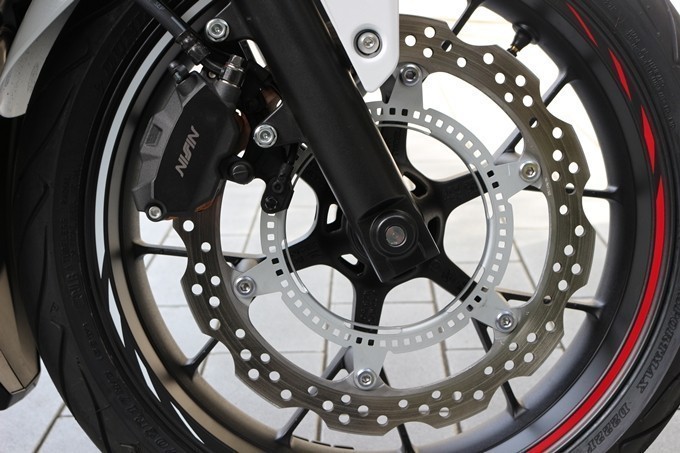 |
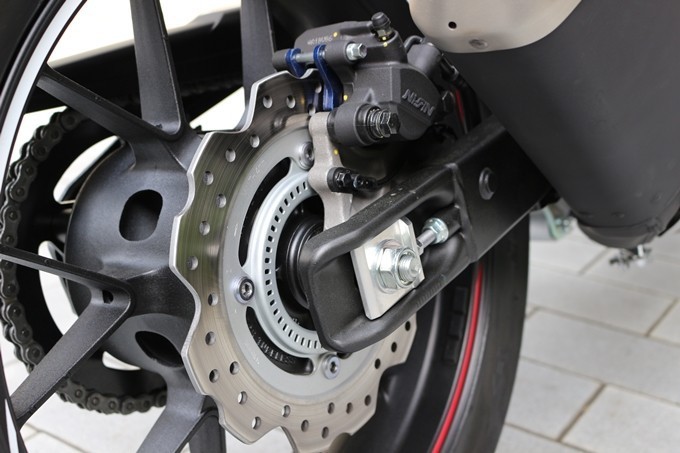 |
[Suspensions]
An upright front fork with an inner tube diameter of 41mm features a preload adjustment mechanism. The rear is also equipped with a separate pressurized monoshock with adjustment, allowing you to make settings to suit your preference and riding conditions.
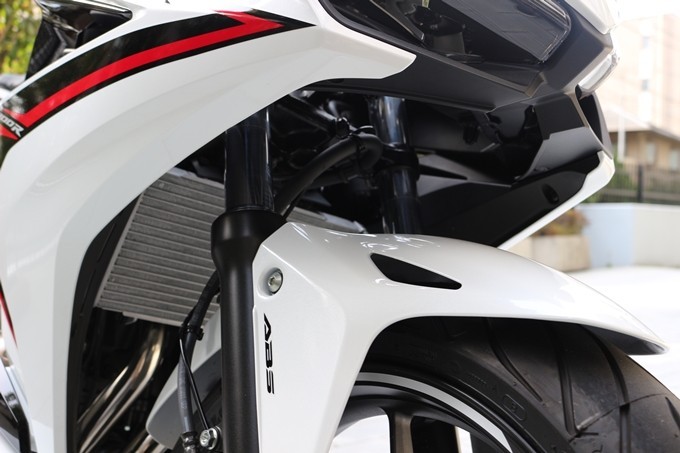 |
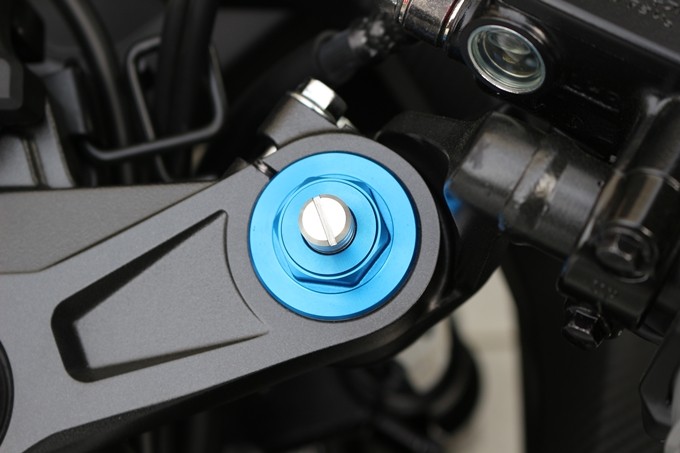 |
- Rear suspension with a preload adjustment mechanism
The engine is even easier to handle
Max output: 34kW (46PS) / 9,000rpm
Max torque: 38N-m (3.9kgf-m) / 7,500rpm
Although there is no significant change in the engine and the max output does not change from the previous model, the optimization of the injection system has made the output at a lower resolution as well as higher torque. This has improved the ease of handling in the low and middle-speed range, which is mostly used in daily basis. The exhaust system has a new design with two silencer outlets, producing a laser sound as high rotation from a low rotation that makes you feel a pulse feeling that seems to be a two-cylinder engine.
The assist slipper clutch has been adopted for the clutch from this model, which reduced the operating load of the clutch lever. The clutch lever has also been adopted in conjunction with the slipper clutch, improving the fit of the lever. The combination of these two makes it so easy to operate the clutch even with one finger that the clutch can be easily operated. Besides, it suppresses excessive engine braking during sudden downshifts, which not only reduces the load on the clutch but also reduces stress.
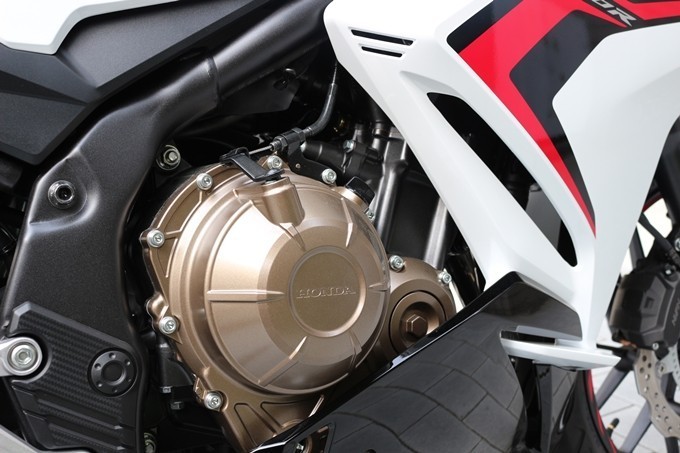 |
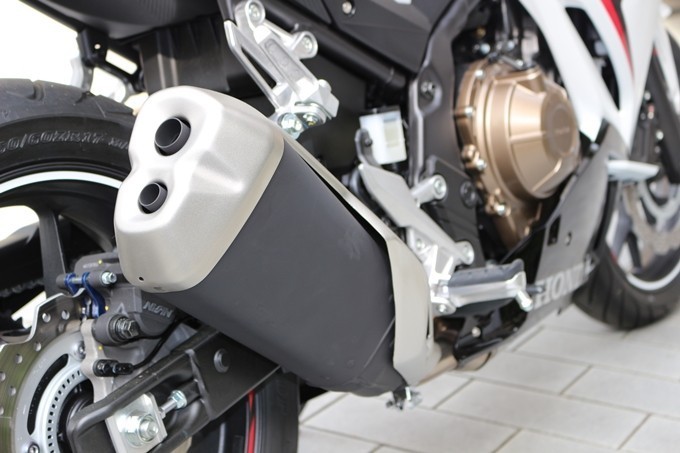 |
Fuel tank with increased capacity
Fuel tank capacity: 17L
Fuel consumption: 28.3km/L (WMTC mode value)
Due to the changes in the fuel tank design, the fuel tank capacity has increased by 1L from 16L of the previous model to 17L. Like the engine power, the fuel consumption in the catalog has been slightly improved by reviewing the injection system.
Seats for better foot grounding
The CBR400R is a slim seat design that contributes to good footing grounding. The storage space underneath the seat is just enough to hold the motorcycle tools in the back, but once I installed the ETC and other items, it didn't seem to fit anywhere else.
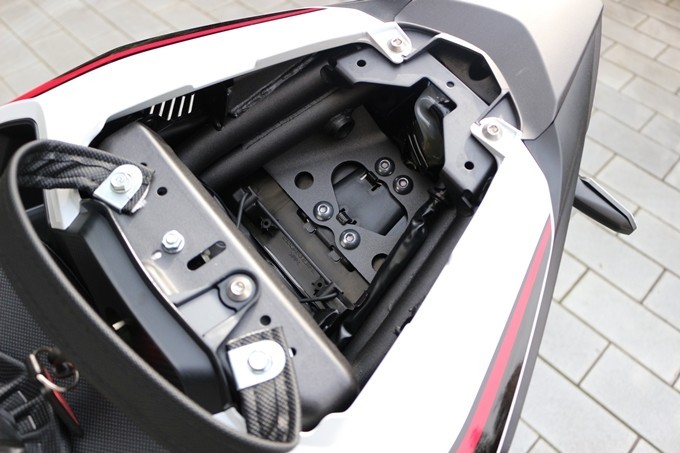 |
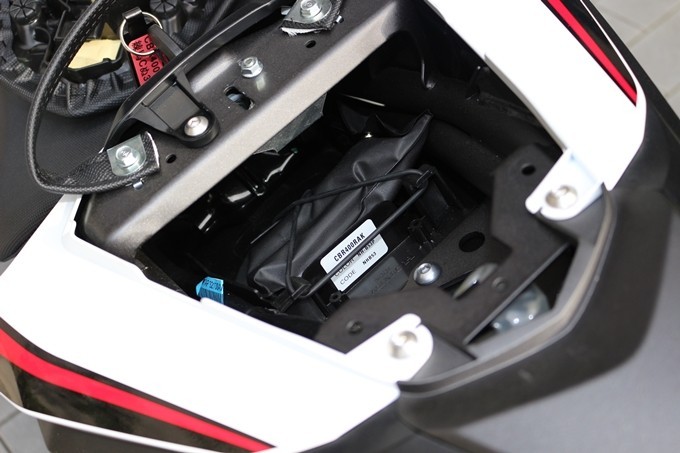 |
What's the Selling Price Concern?
MSRP: 7,500 USD (Japan)
When I actually ride it!
Originally, it was an engine that was easy to handle without complaint when ridding in the city, but by the power came to come out from a lower rotation, I felt that riding was more comfortable. The acceleration often used in the city up to 60km/h is not only perfect but also because it can be carried out at about 3,800rpm at 6 speeds, there is little stress of riding.
It is possible to ride at a relatively low rotation around 100km/h 5,300rpm even when riding at high speed, so long-distance highways are also in the relatively comfortable class in the same displacement zone. The lower handlebar position makes it easier to load the front and improves handling. Although it was not easy to lean forward in that amount, I did not feel cramped because it was a loose position compared to the super sports model.
A good comparison among 400cc full-cowl models would be KAWASAKI NINJA 400. Most of the NINJA 400 is shared with the NINJA 250, so it is very lightweight. The difference in simple equipment weight is 25kg, and because of its lightweight, the NINJA 400 has enough space for the operation and handling.
However, more than that, the CBR400R has a higher rigidity than the NINJA 400, and I felt that the CBR400R was superior in terms of stability especially at high speeds and braking. Although it is a motorcycle named "CBR", I think that the CBR400R is perfect for those riders who enjoy the winding of the touring destination mainly on the street and touring rather than on the circuit speed.
To be honest, this motorcycle will do most things satisfactorily.
In the CBR series that specializes in ridding, the CBR400R was one that made me feel the depth of such a pocket.








